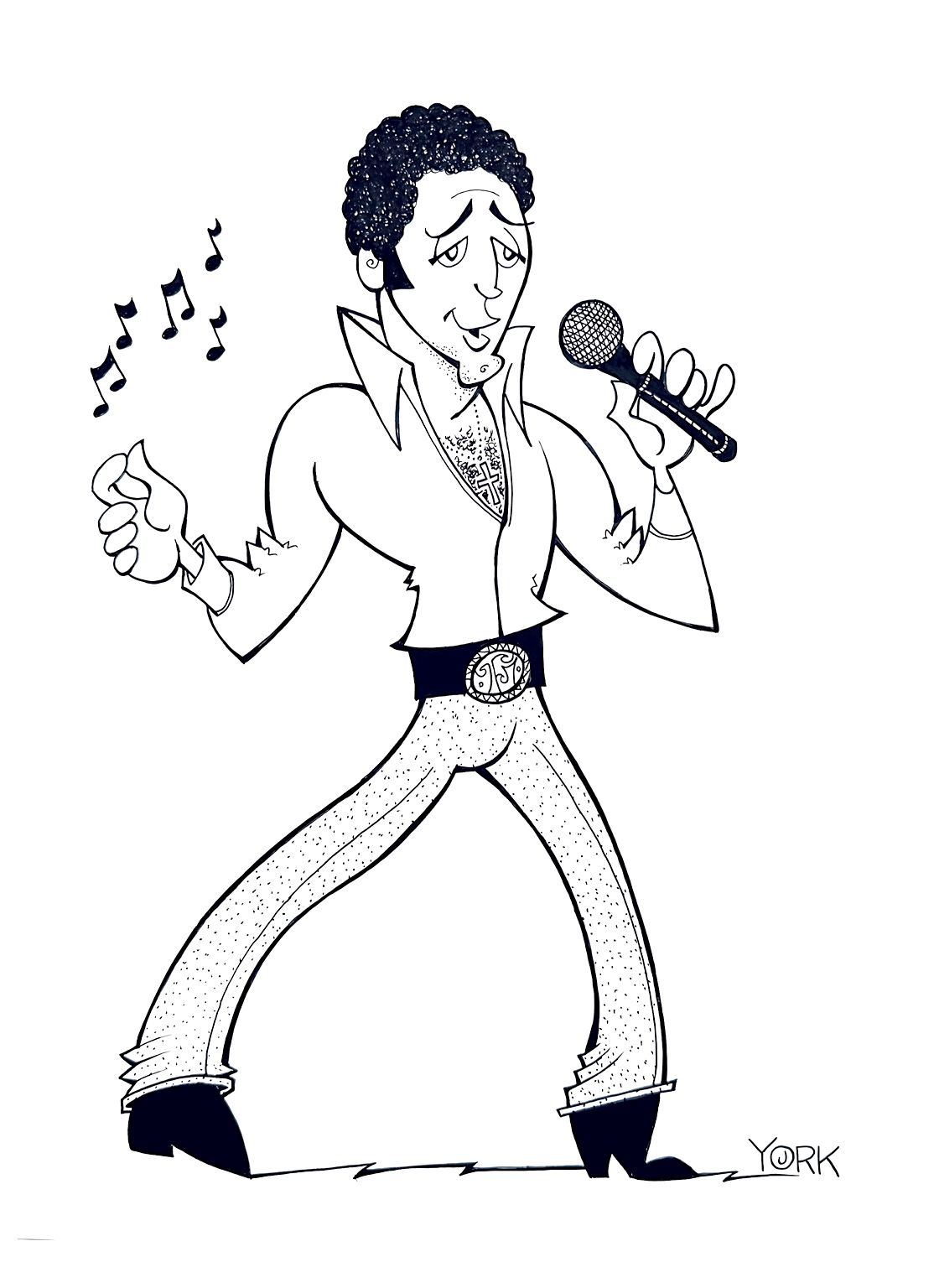
Everything Else Has Come Back, Why Not the Variety Show?
Despite the naysayers in Hollywood who will tell you that studios don’t like period pieces, rom-coms, westerns or sci-fi for any host of reasons, I look around and see such genres being done all over the place, from the big screen to the smaller ones. Indeed, as studios clamor for more eyeballs, they seem more willing than ever to eschew their previous prejudices and give such poo-pooed genres a new chance.
That being said, there is still one specific genre in television that hasn’t made its big, splashy comeback yet even though it is positively ripe for the picking. It’s also a genre that would cost a fraction of most $3-million-an-episode, hour-long dramas and would appeal to mainstream audiences throughout the nation, even the world.
That genre? The variety show.
I’m not referring to shows like “Dancing with the Stars” or “America’s Got Talent,” which are more like game shows. And I’m not thinking about talk shows either—no matter how many musical guests Jimmy Fallon or Kelly Clarkson trot out. No, the kind of show I’m talking about are those classic variety ones from the 1960s and 70s—the shows that served up a big celebrity host with musical guests, comedians, sketches, dancing ... the whole nine yards.
These types of shows used to mesmerize audiences, all four quadrants, with their varied bits, skits, and new guests week in and week out. As a child of that era, I was enchanted. So were my parents. So were my grandparents. How many shows pass muster like that today?
Outside of sports or specialty events, like an awards show, damn few. And yet today, the variety show is almost a lost art, if not a forgotten one. There are so few of them, outside of the venerable “Saturday Night Live” that it borders on the ridiculous. God love “SNL” as it’s about to celebrate its 50th season, but why isn’t there more competition?
There were a host of variety shows being produced in the 60s and 70s, and there seemed to be room for all of them to garner an audience, win awards, and become staples of the nation’s viewing habits. And the star power that fueled such shows was amazing, with many superstars fronting a vehicle at the height of their careers.
Amongst those musical giants who delved into the genre when they could just as easily have toured and called it a day? Judy Garland, Johnny Cash, Tom Jones, Glen Campbell, Andy Williams, Dean Martin, and John Denver. Big-time comedians did variety shows, too. Carol Burnett, The Smothers Brothers, Rowan & Martin, Red Skeleton, Flip Wilson and Jackie Gleason were just some of the top dogs. Heck, even so-so acts like the Starland Vocal Band, the Hudson Brothers, and The Brady Bunch got to host their own variety shows.
I don’t think I’ll ever quite get over Ann B. Davis and Rip Taylor dueting on “Good Morning, Starshine” for the Brady hour, but my point remains that variety covered the gamut and was inescapable on TV during that time.
And variety did a lot to bolster many careers. Sonny and Cher became superstars with their variety program. Wilson became the hottest comic in the nation with his show, even creating a breakout character that would be the envy of any SNL creation today—his sassy, female alter ego “Geraldine.”
And did anyone do variety better than Carol Burnett? Eleven seasons and 25 Emmy wins for the show made her into a comic superstar and her variety hour anchored CBS’s Saturday night lineup for a decade.
And what child of the 60s didn’t spend hours watching “The Lawrence Welk Show,” during visits to Grandma and Grandpa? The bandleader and many of his featured players—the Lennon sisters, Cissy and Bobby, Arthur Duncan—became household names the world over.
Variety played, slayed, and stayed in the conversation for two solid decades.
So why not bring the genre back? Those variety shows were all shot in a studio, ixnaying expensive location budgets. The hosts always stayed comfortably in their wheelhouse, so it’s not like Tom Jones embarrassed himself trying to be a comic. Instead, he sang duets with the most unlikely of partners and made it work like gangbusters. Watch his duet with Janis Joplin on YouTube and you’ll be amazed at how great a singer he was, and how cool he was to adapt to his guests.
Meanwhile, if you did have acting talent, like Sonny & Cher or John Denver, you’d see them perform hilariously in skits, too. Variety showed off talent and then some.
You’d think that Hollywood producers would want to build variety shows around the name talents in the music world today to maximize their reach and potential. At the very least, why aren’t record companies producing such shows as a vehicle for their clients to guest on?
During Jones’ show, entitled “This is Tom Jones,” the Welsh superstar (pictured in my caricature) had the most amazing array of recording artists appear with him 65 episodes in three seasons. Amongst the heavyweights who appeared with him were the Bee Gees, the 5th Dimension, Stevie Wonder, Liza Minnelli, Tony Bennett, Shirley Bassey and The Who. He also attracted plenty of the hottest comics in the 60s and 70s as well, including George Carlin, Robert Klein, Rich Little, Judy Carne, Godfrey Cambridge and Pat Paulsen. Why, on his very first episode that premiered on February 7, 1969, Jones’ guests were Peter Sellers, Joey Heatherton, Richard Pryor, and the Moody Blues.
No wonder the show was a phenomenon. Wouldn’t that same sort of thing play like gangbusters today?
With audience attention spans fracturing more and more each year, what with TikTok and YouTube carving every bit of entertainment into bite-sized pieces, the variety show comes tailor-made with its mini segments, alternating between various singers, skits, bits, and dance numbers.
Dancing, too, was huge on many of these shows, and the variety show would be another form to attract all those audiences still clamoring for more after catching up with the latest dance crazes on TikTok.
All variety show episodes were stand-alone, too, unlike so many dramas today, requiring their own Wikipedia off-shoot to keep up with the multitude of characters and storylines. And truly, there are so many talented people in Tinsel Town who are wasting away in vehicles beneath their talents when variety is all but screaming for them to participate in such ventures.
Why is a major triple threat like Wayne Brady hosting “Let’s Make a Deal”? Why is the similarly blessed Seth McFarlane doing a “Star Trek” parody as his other vehicle outside of all his cartoon shows on FOX? And wouldn’t multi-hyphenates like Jamie Foxx, Derek Hough, Kristin Chenoweth, Emmy Rossum, and Kristen Bell excel in a variety format? Of course they would.
The fact that variety seems to be forgotten, written off as mere nostalgia, or not explored probably comes down to fear. Variety shows haven’t been done in decades, by and large, at least not the kinds I’ve lauded here, so execs lack relatability. True, there have been successful sketch shows, like those headed up by Keenan Ivory Wayans, Ben Stiller, Any Schumer, and Key & Peele over the past decades, but almost nothing fronted by musical stars.
So, I’m sure that it all feels like a gamble for studios, but really, what isn’t these days? I’d bet on a variety show starring Taylor Swift versus sinking $200 million into another superhero saga any day of the week.
Just consider the likes Harry Styles, Miley Cyrus, Dua Lipa, and Rihanna. They’re all incredible recording artists, and yet they also want to be actors—although they’ve hardly set the world on fire in that department. So, wouldn’t a variety show be a way for them to shore up their thespian skills, show off their range, and reinvigorate such lesser aspects of their careers?
Remember how funny Justin Timberlake and Christina Aguilera have been when they hosted “SNL”? What’s keeping them from trying a variety show for 13 episodes a season?
And what hot new artists today wouldn’t fancy becoming the next Cher? She was a good singer before her show with Sonny, and then her own variety show after their divorce, but variety is what made her a superstar as it showed off her vocal range and her penchant for comedy and characters. Wouldn’t the new “Cher” be worth the investment by some studio?
Why are studios content creating imitation after sequel after reboot, almost always to diminished returns when they could start something anew like the variety genre?
Hollywood has a thousand problems these days, but variety shouldn’t be one of them. The sheer novelty of the variety show genre, let alone the talent that could fit perfectly within its framework, should present itself as the next big thing in the industry.
Think of how exciting it would be for a studio to introduce Generation Z to the genre. Or to bring such a fondly remembered style of show back for the Boomers. I can imagine YouTube and Spotify might even be interested in sharing the production cost, if necessary, given the opportunity for soundtrack rights or next day airings.
Which brings me back to the talented Mr. Jones. He may be 84 today, but he’s still touring and still shaking his groove thang. He’s both an exciting nostalgia act on tour for the old fogies and a thrilling coach and judge for the newcomers who watch him on the UK version of “The Voice.”
Perhaps the moment is right to again offer him his own variety show to front. “This is Tom Jones 2024”? I’d watch it. And I’ll bet millions more would, too.
*Feature image created by Jeff York.

